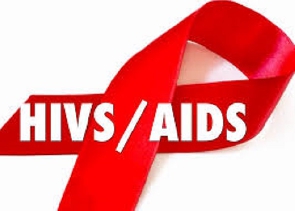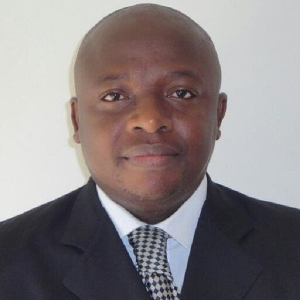On May 18 every year, World AIDS Vaccine Day or HIV Vaccine Awareness Day is marked to create awareness about AIDS and its immunisation measures.
World AIDS Vaccine Day also puts the spotlight on the importance of developing a vaccine to prevent HIV infection and how healthcare workers, scientists, and volunteers are working towards finding a safe and effective vaccine for the disease.
On HIV Vaccine Awareness Day, the world is reminded that HIV can be prevented, and we can all play an important role in preventing its spread and ease the global burden wrought by the disease.
World AIDS Vaccines Day is different from World AIDS Day which is marked on December 1.
Every year, communities around the world hold a variety of activities on this day to raise awareness about vaccines, prevention, educate communities and bring attention to ways in which individuals can be a part of international effort to hold the spread of HIV and AIDS.
Usually, countries mark World AIDS Vaccine Day by holding conferences around the world. But due to COVID-19, no such gatherings have taken place. Video-conferencing will likely be used for interaction between scientists and healthcare professionals.
Already, the World Health Organisation has warned that COVID-19 may cause immunisation services across the world to shut down and these risks triggering a resurgence of diseases that can be prevented with safe and effective vaccines.
So how close are we to developing a vaccine for the HIV?
According to WHO, 75 million people have been infected with the HIV virus and about 32 million people have died of HIV since the start of the AIDS epidemic. Globally, some 37.9 million people were living with HIV at the end of 2018. An estimated 0.8% of adults aged 15–49 years worldwide are living with HIV, although the burden of the epidemic continues to vary considerably between countries and regions.
So, what is holding back the development of the vaccine in the face of these stark global figures?
Firstly, scientists explain that the immune system of almost all individuals do not respond to the HIV virus. The HIV virus attacks the human immune system, specifically targeting the CD4 cells - the body’s main defenders against infection - and using them to make copies of themselves. While the immune system produces HIV antibodies, it can only slow the disease progression and not stop or kill the virus.
Also, one of the major obstacles in developing a vaccine for HIV is that the virus mutates quickly, making it difficult to create a vaccine that works against it. Basically, a vaccine targets the virus in a particular form, however, it may not work if the virus mutates.
Scientists typically use killed or weakened pathogens to make vaccines. But this technique has not worked in the case of HIV. The fact is that killed HIV virus does not work well to trigger an immune response against the virus in the body. Also, there is a significant potential risk of using any live form of the virus.
Vaccines are especially important for people who have a higher risk of infections such as HIV infection. However, they buy the body more time to clear the infection on its own before disease strikes. With HIV having a long-dormant period before being progressed to AIDS, the virus hides itself in the DNA - which means the hidden copies of the virus can’t be destroyed. Hence, a vaccine that buys more time won’t work with an infection like HIV.
Finally, vaccines are tested thoroughly on animal models for safety and efficacy evaluation before being tried on humans. However, researchers can’t find a good animal model to ensure that the vaccine is likely safe and effective for the HIV virus. Moreover, tests carried out on animals have not shown how humans would react to the vaccines.
Timeline: History of HIV vaccine research
1984
HIV was identified as the cause of AIDS. U.S. HHS Secretary Margaret Heckler declared that an AIDS vaccine will be ready for testing within two years.
1987
The first HIV vaccine clinical trial opened at the National Institutes of Health (NIH) Clinical Center in Bethesda, Maryland. This Phase 1 trial enrolled 138 healthy, HIV-negative volunteers. The gp160 subunit vaccine showed no serious adverse effects.
1988
The National Institute of Allergy and Infectious Diseases (NIAID) AIDS Vaccine Evaluation Group (AVEG), the first U.S. cooperative HIV vaccine clinical trials group, began enrolling volunteers in its first trial.
1992
NIAID launched the first Phase 2 HIV vaccine clinical trial. This trial included HIV-negative volunteers with a history of high-risk behaviour -- injection drug use, multiple sex partners, or sexually transmitted infections. Participants were counselled repeatedly to avoid any behaviours that put them at risk of HIV infection.
1998
The first annual HIV Vaccine Awareness Day to honour vaccine study volunteers was observed.
The first large-scale HIV vaccine trial began. VaxGen initiated a Phase 3 trial of AIDSVAX (VAX004) in North America and the Netherlands involving more than 5,400 volunteers.
1999
NIAID began the first African preventive HIV vaccine trial in Uganda.
The first large-scale HIV vaccine trial in a developing country began. VaxGen initiated a Phase 3 trial of AIDSVAX (VAX003) involving over 2,500 volunteers in Thailand.
The newly established Vaccine Research Center (VRC) was dedicated to immunisation advocates Dale and Betty Bumpers.
2000
NIAID formed the HIV Vaccine Trials Network (HVTN), a network of clinical sites in the United States and abroad dedicated to developing a preventive HIV vaccine by testing and evaluating candidate vaccines in all phases of clinical trials. The network included more than 25 sites in the United States, Africa, Asia, South America, and the Caribbean.
The first African HIV vaccine trial was completed in Uganda.
2003
The U.S. and Royal Thai governments jointly initiated RV144, a Phase 3 trial to evaluate a novel HIV vaccine strategy commonly referred to as "prime-boost."
Formation of the Global HIV Vaccine Enterprise was proposed in the journal Science.
2004
Both VaxGen candidates failed to confer protection against HIV in Phase 3 trials.
2007
NIAID halted the Phase 2 Step and Phambili studies due to safety concerns.
2009
The Phase 2 HVTN 505 study was initiated to evaluate a “prime-boost” vaccine regimen developed by the VRC.
Results of the Phase 3 Thai Trial (RV144) revealed that the vaccine combination demonstrated a modest preventive effect in humans. The trial, which enrolled more than 16,000 volunteers, was the first, and to date only, large clinical study to demonstrate efficacy for an investigational HIV vaccine.
2010
VRC scientists identified two potent antibodies that neutralize most strains of HIV in the laboratory (VRC01 and VRC02).
The Pox-Protein Public-Private Partnership (P5), an international collaborative team committed to building on the modest success of RV144, was formed.
2011
HVTN 505 was expanded to include protection from HIV as primary endpoint.
2012
Additional analyses of samples from RV144 provided insight into what types of immune responses may be needed for an effective vaccine.
2013
HVTN 505 immunizations were stopped due to lack of efficacy.
2015
The Phase 1/2 HVTN 100 study, part of the P5 research endeavor, launched to test the safety of an experimental HIV vaccine regimen based upon the RV144 findings, as well as its ability to generate an immune response.
2016
NIAID launched the AMP Studies to test whether intravenous infusions of the antibody VRC01 are safe, tolerable and effective at preventing HIV infection. The trials were also designed to answer fundamental scientific questions for HIV prevention and vaccine research.
HVTN 702, part of the P5 research endeavor, launched to test whether a new version of the RV144 HIV vaccine candidate safely prevents HIV infection among adults in South Africa.
2017
NIAID and partners launched Imbokodo or HVTN 705/HPX2008, a Phase 2b proof-of-concept study evaluating the safety and efficacy of an experimental regimen based on a “mosaic” vaccine designed to induce immune responses against a wide variety of global HIV strains.
Health News of Monday, 18 May 2020
Source: www.ghanaweb.com













